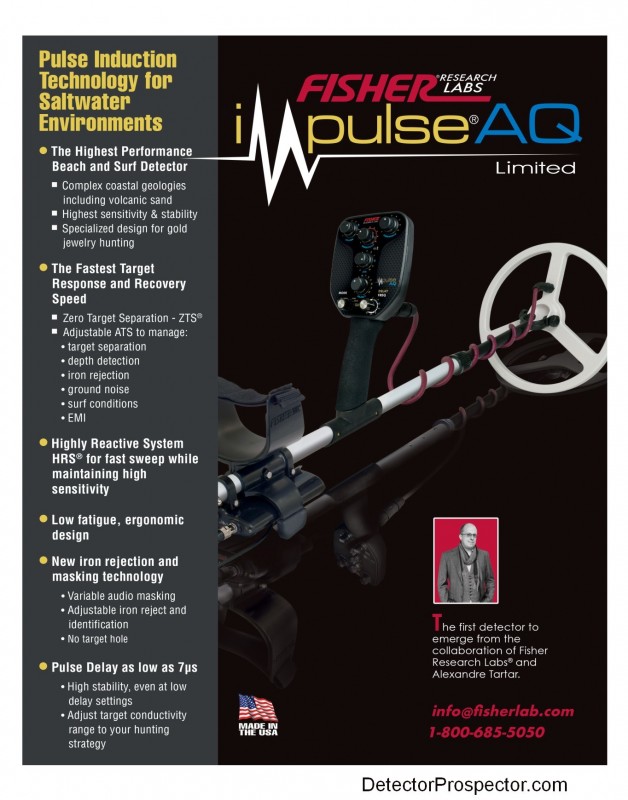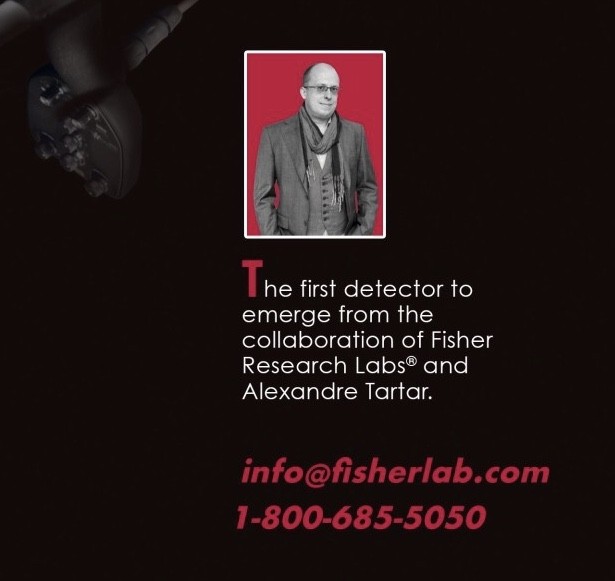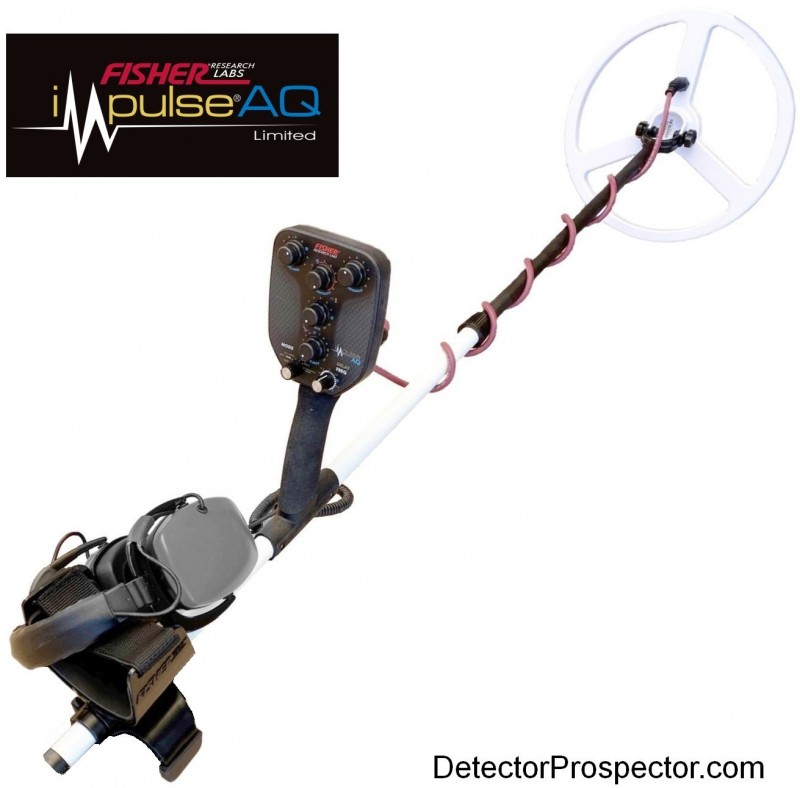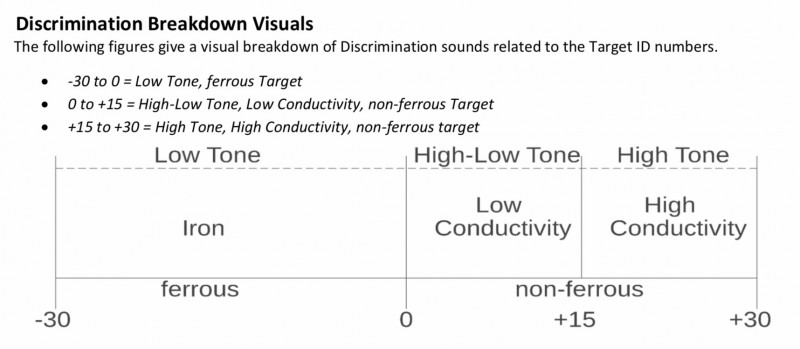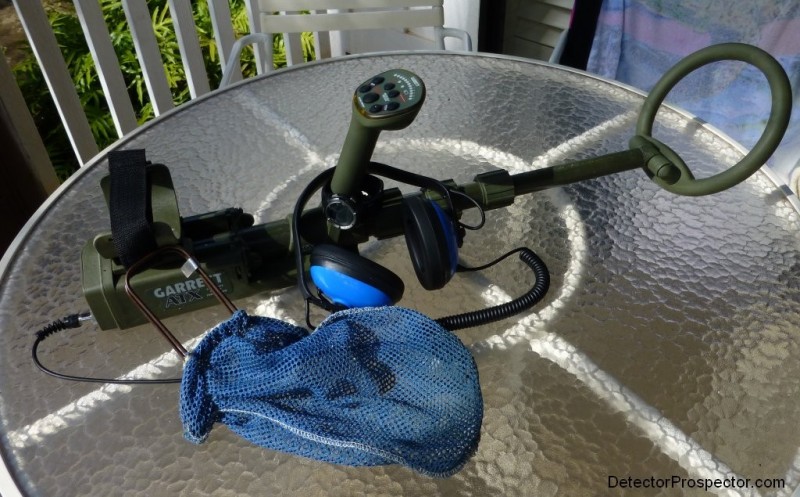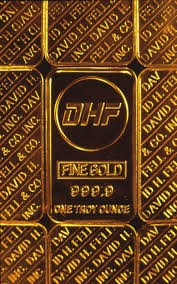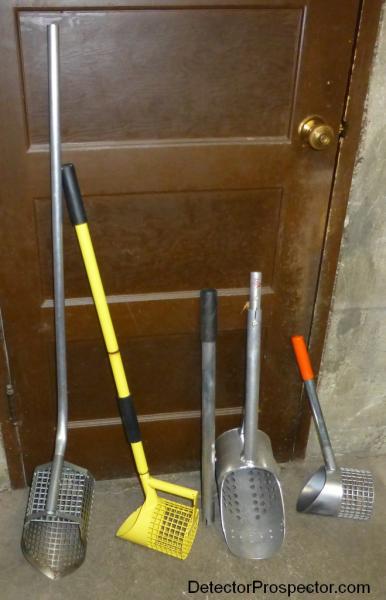-
Posts
19,726 -
Joined
-
Days Won
1,568
Content Type
Forums
Detector Prospector Home
Detector Database
Downloads
Everything posted by Steve Herschbach
-
There will be four batteries in the upper rod, instead of in a separate battery pack under the rod. Something tells me Fisher will be paying attention to the balance since that’s been a major selling point. But if as you are asking, you just remove the batteries... it’s nose heavy. Though not that bad in my opinion. I’ve swung worse.
-
Higher frequencies as used in gold nugget detectors make small and/or weak targets stronger. Small gold hits harder, and so does foil. Picking the right frequency and sensitivity can create a form of basic discrimination by making a machine insensitive to small and thin aluminum. People have different ideas about where to draw that line. I've often taken nugget detectors like a Gold Bug 2 to a tot lot and dug everything, including lots of small and thin foil. In theory though there is such a thing as too sensitive, and most gold jewelry has at least a little mass to it. Single post ear rings can be as hard a target to hit as exists, so having a hot machine is important if they are your target. People talk about the 1 carat diamond on a post, but frankly when I hunt micro jewelry I have a lot of fun, but the finds are rarely anything to write home about. It's a great way to collect broken zippers though! Lower frequencies shift target id numbers to the low end, expanding the range for silver coins. High frequencies shift everything to the top end, compressing silver into a very small range, but expanding the spacing in the gold and aluminum range. I prefer that myself, as frankly if I'm coin detecting I usually do not care if it is a dime or a quarter. I'm digging them. And expanded gold range can help you identify and possibly avoid certain common pull tabs while minimizing the potential for lost gold. I've fiddled around with this a lot over the years, but I always tend to come back to digging all non-ferrous in some chosen range, and so from a practical aspect it's not proven too important to me to have an expanded gold range. But that's just me. If you are into that stuff, get DFX Gold Methods. It applies to any machine really as far as the gold and aluminum nothing strategies discussed. If I am hunting rings I often just dig clean signals that hit hard on one target id with no variation. The classic "round signal". That seems to work as well as any fancy notching strategy. Normalization applies a calculation to raw numbers to equalize the results to a chosen frequency. Minelab refers to calculated "normalized" numbers as "bins". The un-normalized "raw" number has a multiplier applied and the result is tossed in the appropriate bin. Low frequencies expand the high (coin) conductive range and compress the low (gold) conductive range. High frequencies expand the low conductive range and compress the high conductive range. Page 82 from Understanding Your X-Terra attempts to show what happens when low frequency raw numbers for a coin are mapped into the compressed high frequency range. Since the "bins" are smaller for coins at the higher frequency target id numbers will be less sure of themselves as they shift between closely based bin boundaries.
-

Going To Alaska With My 800 & 600
Steve Herschbach replied to Norm S's topic in Minelab Equinox Forum
The Brooks Range and Wiseman Area is gorgeous. But once you get out of the mountains to the north it gets real flat for a very long way! -
- 39 replies
-
- 1
-

-
- beach detecting
- coils
-
(and 1 more)
Tagged with:
-

Going To Alaska With My 800 & 600
Steve Herschbach replied to Norm S's topic in Minelab Equinox Forum
Awesome, have a great trip. It’s a long drive from the Brooks Range to Prudhoe... way longer than it looks on a map. Drove it many times myself. Lots of pretty swamp (oops, wetlands) to look at. Be careful getting out of your car - the mosquitos may carry you off! Dalton panning info and more here... https://www.detectorprospector.com/magazine/gold-prospecting/public-mining-sites-parks-tours-museums/#Alaska -
12.5” too large, 8” too small..... 10”-11” just right!
- 39 replies
-
- 2
-

-
- beach detecting
- coils
-
(and 1 more)
Tagged with:
-
Target masking is every bit as real in the water as on land, no matter the type of detector used. The more trash there is, the more likely good finds are being masked. Maybe more than have been found. As far as I am concerned Jim, you are doing what needs to be done at any high value location. Great job, you are an inspiration! 👍🏼 Beneath The Mask by Tom Dankowski
-

First Gold Nugget With MDT 8000
Steve Herschbach replied to Steve Herschbach's topic in Tarsacci Metal Detectors
Nugget detecting in mineralized ground can be a bit tricky. The bottom line is pretty simple... gold reads well into the ferrous range. This means that if you employ any ferrous discrimination at all, you will leave some nuggets behind. This is why serious nugget hunters always dig all targets, and why an $8000 nugget detector like a GPZ 7000 has no ferrous rejection. But some places have too much trash and you do not have enough time. You can go about the situation in a couple different ways. You can aggressively try and make targets go ferrous, and in highly mineralized ground, if you try hard enough, you will probably succeed. You will also walk away from more gold than a person who is willing to dig targets that are “iffy”, which is the other way to go about it. Do you look for reasons to dig, or look for reasons not to dig? It is not uncommon at all to get targets that give off both ferrous and non-ferrous responses, bouncing up and down. They could be trash, they could be a nugget. Do you dig them, or don’t you? All I can tell you is these flat “tin” targets read aggressively non-ferrous. This is not like some unknown issue... many detectorists can tell you about the wonders of rotted steel cans. The only detectors that I know of that pretty much squash the stuff are the BBS/FBS machines, but they are also not well regarded as nugget machines by many people for various reasons. One major reason being that the aggressive rejection of ferrous comes at too high a cost in gold nugget capability. Non-Ferrous Reading As Ferrous Tune Out Nails, You Will Miss Gold Ferrous/non-ferrous overlap region -

Golden Mask Telescoping Shaft Rebuild
Steve Herschbach replied to Steve Herschbach's topic in Minelab Equinox Forum
Very nice! That’s a great thing about the Gold Monster, super easy to mount it to almost anything. -

Booster Speaker Information
Steve Herschbach replied to Jonathan Porter's topic in Minelab Metal Detectors
If you are using external speakers or headphones there are numerous audio boosters you could use. -
Welcome to the forum KOB... or I guess it’s King-Of-Bling! I think I’m more like the Third Undersecretary of Aluminum Pulltabs & Steel Bottlecaps (TUAPSB)
-

New Garrett Ace Apex Versus The Rest
Steve Herschbach replied to Nuke em's topic in Metal Detector Advice & Comparisons
If you want competitive depth tests you will have probably have to wait until after the machine is for sale. All decent VLF detectors made these days get depth within about an inch or less of each other. I’m sure the machine will perform well, and just as sure it won’t somehow blow everything else away. -
-

AQ Day 2
Steve Herschbach replied to cudamark's topic in First Texas - Bounty Hunter, Fisher & Teknetics
I gave it a brief spin. The Tarsacci Forum would be a better place to discuss that. I use what intrigues me, and right now I'm infatuated with the AQ. I have several machines, and can only use one at a time. https://www.detectorprospector.com/forums/topic/13112-first-gold-nugget-with-mdt-8000/ -

Broken Scoop Handle
Steve Herschbach replied to Steve Herschbach's topic in First Texas - Bounty Hunter, Fisher & Teknetics
This scoop has a semi-pointed nose and I’ve been digging in rocks for years with it. The scoop is just fine, it’s the handle just finally gave up the ghost. I might get another scoop sometime, but I’ve got no complaints really with the one I have. The Stealth 720i would be high in my list for sure.

